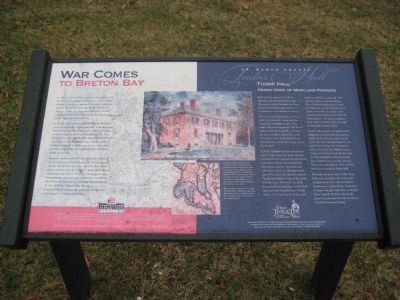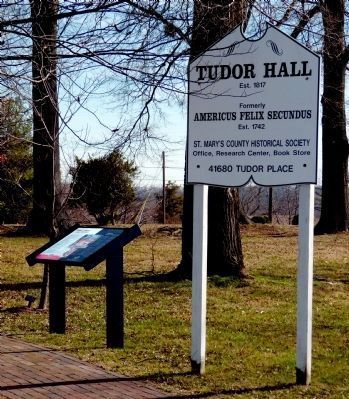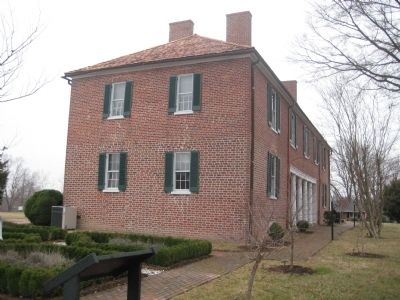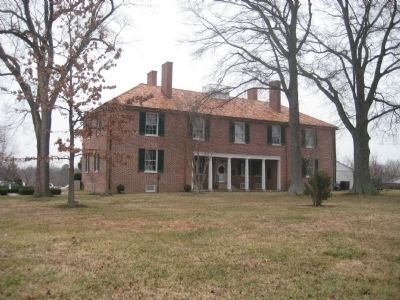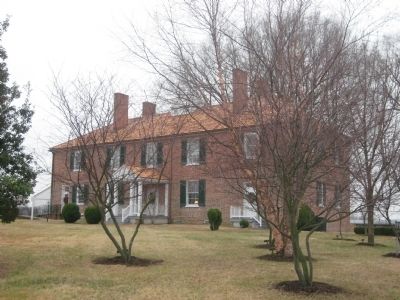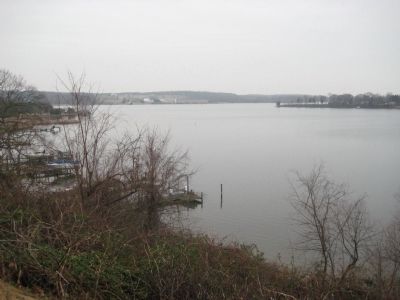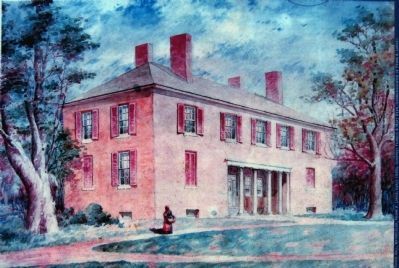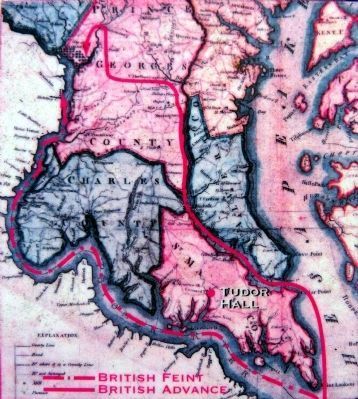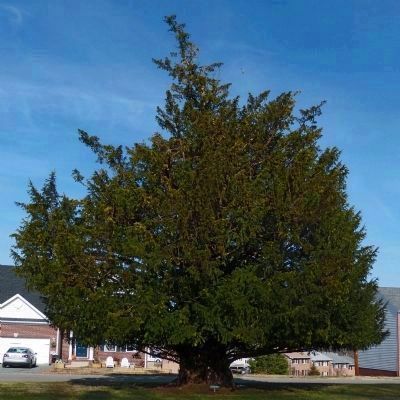Leonardtown in St. Mary's County, Maryland — The American Northeast (Mid-Atlantic)
War Comes to Breton Bay
Tudor Hall
— Grand Home of Maryland Patriots —
One of the first military actions taken by the British was to blockade the Chesapeake Bay. From huge war ships, British raiding parties came ashore by barges to secure supplies and terrify the population. They also lured several thousand free and enslaved African Americans to join the British forces. State and local militias attempted to protect residences and towns, and also to quell the slave uprisings that the British sought to provoke.
Upon the invaders arrival, local militia would flee to the woods being outnumbered and vastly over-powered by the British. No harm was to be done if the wives, servants, and slaves did not resist their taking of supplies and tobacco. However, there are numerous examples of homes and courthouses burned by the British throughout the tidelands. Miss Elizabeth M. Key of Tudar Hall and Mrs. Thompson saved the Leonardtown courthouse by telling the British that it was used as a house of worhip.
Tudor Hall
Built on land granted in 1649 to Bertram and Dominick Obert, this pleasant Georgian building has been home to successive generations of contributors to Leonardtown history.
The property, first known as part of Little St. Lawrence, came into the ownership of Phillip Lynes. Lynes called the tract Shephard's Old Fields and in 1708 the Assembly, or which he was a member, endorsed a petition that a town and County Court House be erected at this "most convenient place".
In 1744, Abraham Barnes is documented to be the owner of a hosue located on land which he named America Felix Secundus. Barnes was a successful ship owner, planter and public servant who served as a delegate to the Assembly and to the Albany Congress. The Barnes family occupied the house from the late 1760s-1817. In 1798, then owned by Abraham's son Richard, the house was described as a "dwelling house of wood 46 by 22 feet and addition of Brick to each end" with separate kitchen and storehouses. When Richard Barnes dies in 1804 his will freed several hundred slaves "three years after my death" and stipulated that they were to take the name Barnes. The name continues in St. Mary's County today through descendants of these slaves.
In 1817, the property was purchased by Philip Key; it is from his connection to Tudor royalty that the name was derived. The Star Spangled Banner, the poem that
became our national anthem was written by Philip's cousin, Francis Scott Key. It was the Key family who transformed the house into the structure we see today. Joseph Harris Key who died in 1917 was the last Key to reside in Tudor Hall.
Through the generosity of Mrs. Mary Patterson Davidson, the house was purchase in 1947 and restored to function as a public library dedicated to those who gave their lives in World Wars I and II. In 1984, this lovely place was purchased by the St. Mary's County Historical Society.
[text with center pictures]The Key family renovated Tudor Hall to the popular Georgian style between 1810 and 1817. They added a full second story with eight bedrooms. They symmetrical eings of the unusual inset portico included a ballroom, and a beautiful hanging staircase in the central hall.
The exterior finish was made to resemble limestone blocks. Restoration in the 20th century revealed the brick detailing seen today.
Erected by Southern Maryland Heritage Partnership.
Topics. This historical marker is listed in these topic lists: African Americans • War of 1812 • War, World I • War, World II. A significant historical year for this entry is 1812.
Location. 38° 17.306′ N, 76° 38.079′ W. Marker is in Leonardtown, Maryland, in St. Mary's County. Marker is at the intersection of Key Way and Tudor Hall Road, on the left when traveling south on Key Way. Touch for map. Marker is in this post office area: Leonardtown MD 20650, United States of America. Touch for directions.
Other nearby markers. At least 8 other markers are within walking distance of this marker. The Legend of Moll Dyer (a few steps from this marker); Tudor Hall (a few steps from this marker); A Town Spared (within shouting distance of this marker); This Cannon (about 500 feet away, measured in a direct line); Lynching in America / Lynching of Benjamin Hance (about 600 feet away); Leonardtown (about 600 feet away); The Great House (about 600 feet away); Veterans Memorial (approx. 0.2 miles away). Touch for a list and map of all markers in Leonardtown.
Credits. This page was last revised on November 12, 2018. It was originally submitted on March 28, 2009, by F. Robby of Baltimore, Maryland. This page has been viewed 1,789 times since then and 27 times this year. Photos: 1. submitted on March 28, 2009, by F. Robby of Baltimore, Maryland. 2. submitted on January 20, 2013, by Allen C. Browne of Silver Spring, Maryland. 3, 4, 5, 6. submitted on March 28, 2009, by F. Robby of Baltimore, Maryland. 7, 8, 9. submitted on January 20, 2013, by Allen C. Browne of Silver Spring, Maryland.
